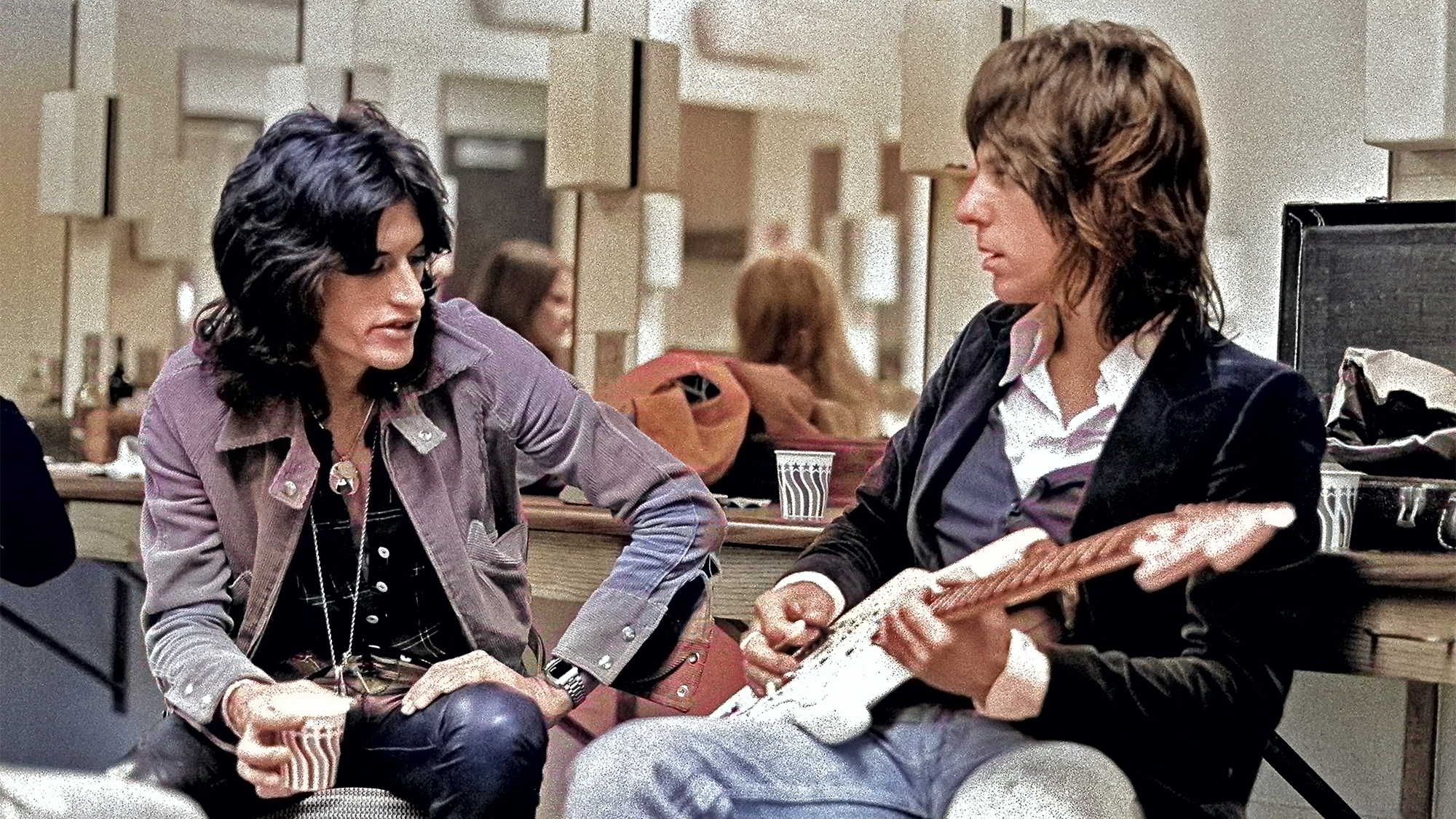The 12-Step Guide to Electric and Acoustic Guitar Setup
These 12 steps are considered absolutely essential in a basic setup.
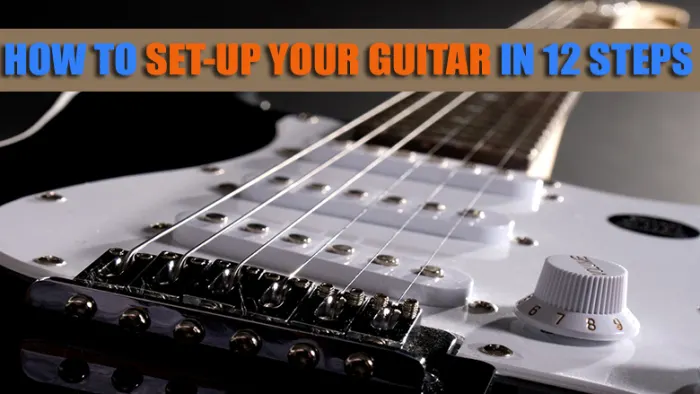
One of the most bedeviling aspects of guitar playing is the maintenance procedure known as a “setup.”
What’s involved? Will it really make your guitar play better? And is it possible to do it yourself, or should you leave it to a pro?
A setup is actually a series of procedures, many of which fall under the categories of “basic maintenance” and “fine adjustment.” Much like a car’s seasonal tune-up, a setup should be performed to address the changes a guitar undergoes over time, with adjustments made to the instrument in order to match your preference of strings, pickups and playing habits. A setup can also reveal potential problems before they become major headaches.
The following 12 steps are considered absolutely essential in a basic setup. What’s more, these are the same steps—presented in the same order—as the ones taken by a professional repair shop.
We’ll briefly discuss each procedure and tell you what tools are required. Then, we’ll tell you how to perform them. We’ll also include a rating system to indicate the level of ease: from 4 STARS for easy to 1 STAR for those jobs best left to the most experienced players.
1. Adjust the Truss Rod
Virtually every acoustic and electric steel-string guitar built after the mid-Seventies has an adjustable truss rod, which runs the length of the neck and counteracts the tension of the strings to help keep the neck straight. Loosen it and the strings pull the neck into a concave bow, resulting in higher action—i.e., the distance between the strings and the fretboard. Tighten it, and the neck bends backward—this is call back-bow—against the natural curve the string tension imparts, moving the strings closer to the fretboard.
All the latest guitar news, interviews, lessons, reviews, deals and more, direct to your inbox!
The adjustable end of the truss rod—either a male or female nut—can be found in one of a few places. On an electric guitar, it is usually beneath the truss-rod cover on the headstock or at the body end of a bolt-neck. On an acoustic guitar, it can typically be found within the body of the guitar, at the neck-body joint. Note: Classical guitars, which use nylon strings, don’t have truss rods.
TOOLS Small Phillips-head screwdriver (to remove the truss-rod cover), appropriate hex key or wrench (almost always supplied with a new guitar). Bolt-neck axes with concealed nuts require removing the neck and using a surrogate body and a neck jig—this is a job best left to a pro shop.
HOW TO DO IT With the guitar strung and tuned to pitch, press one of the strings both at the 1st fret and at one of the frets near the neck-body joint. The string is now forming a straight line between the two frets. By doing this, the nut and bridge—the other two arbiters of action (besides the neck)—have been eliminated from the equation.
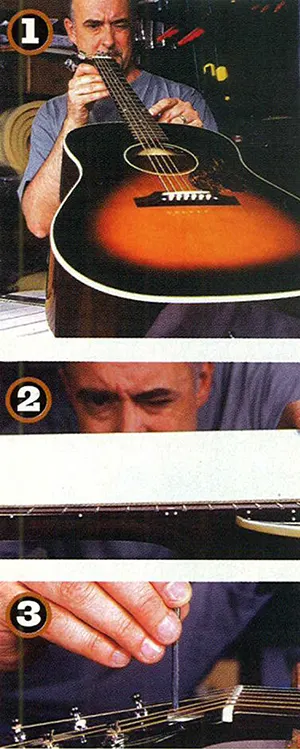
If the neck is perfectly straight, there will be a tiny gap—just enough to slip a piece of paper or business card through—between the string and the frets in the middle of the neck. If the neck has too much bow, or relief, the gap will be wider, and so the truss rod must be tightened. If the neck is back bowed, the strings will lie flat against the frets, and the truss rod must be loosened.
An experienced repair tech might simply sight down the neck (PHOTO 1) or use a straightedge (PHOTO 2) to take a precise measurement of neck bow. When adjusting the truss rod (PHOTO 3), turn the nut in minute increments—say, quarter turns—checking the relief frequently, and use as little torque as possible.
D.I.Y. FACTOR Add one star if you’re confident, mechanically inclined or have seen a pro perform the adjustment. Subtract a star if you’re spooked at the thought of screwing up a perfectly good guitar, and subtract another if you own a bolt-neck guitar with concealed nuts.
2. Adjust the Bridge Height
A guitar’s action can also be adjust at the bridge. On an electric guitar, this is a matter of twisting the appropriate screws; on an acoustic guitar, you may have to shim or sand the bridge saddle.
TOOLS A machinist rule, a screwdriver or hex-key (electric guitar), calipers, a shim stock or stationary belt sander (acoustic guitar)
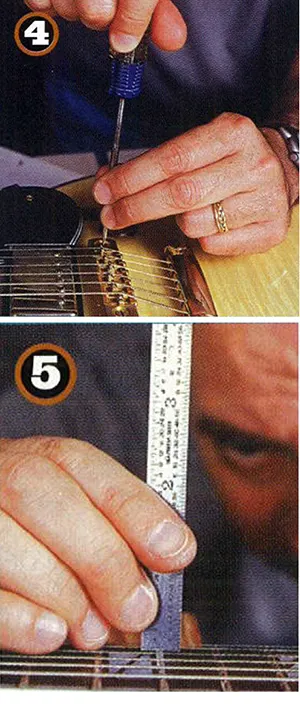
HOW TO DO IT Once the truss rod has been properly tweaked, simply raise or lower the bridge’s vertical screw, or screws, to adjust the string height (PHOTO 4). Action is measured most often with a machinist’s rule (PHOTO 5) as the distance between the string and the top of the 12th fret. On the treble side (top three strings), 3/64ths of an inch would be considered low action, whereas on the bass side 4/64ths or 5/64ths would be low. Double those numbers and you’ve got moderately high action.
As mentioned, adjusting an acoustic guitar’s bridge height requires some surgery to the bridge saddle. Unless you have experience with this modification, leave it to the pros.
Once you’ve adjusted the truss rod and bridge, it’s time to test the guitar for clear tone. Play FIGURE 1 in 1st positing as shown, then transpose it up to 5th position, 9th position and so on, until you’ve covered every note on your guitar.
FIGURE 1

Also play whole-step bends (FIGURE 2) across the entire fretboard.
FIGURE 2

Listen for buzzes as well as false notes—for instance, fretting an E note or bending to what should be an E and hearing an F.
Excessive buzzing and widespread false notes mean that you’ve either dropped the bridge too low or excessively counter-bowed the neck. If so, go back and check your work. One or two false notes on an otherwise well-adjusted guitar indicate an improperly crowned fret, something best corrected by a skilled tech.
D.I.Y. FACTOR Electric guitar, ★★★★; acoustic guitar, ★
3. Check the Nut Height
With the truss rod and bridge fine-tuned, we enter the final phase of action altering. Although these days, the vast majority of nuts are well made, even some expensive production guitars can slip through the cracks with nut slots cut a bit too high or too low.
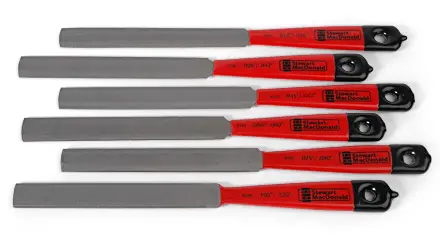
TOOLS A compete set of nut files, shim stock for raising the nut, X-Acto knife and other miscellaneous tools for removing the nut, electronic tuner
HOW TO DO IT If your bridge and truss rod are up to snuff, play each string open, then at the 1st fret (FIGURE 3).
FIGURE 3

If any open string buzzes, its string slot is low and the nut must be shimmed up. Of course, this means the other slots must be deepened to compensate for the higher nut. If all is clear, check the pitch with an electronic tune. A high slot will cause the notes at the 1st fret to sound 10 to 15 cents sharper than they should. Again, the slots must be deepened. This is serious surgery. A set of nut files is an investment for a dedicated luthier, and cutting properly shaped nut slots takes an artisan’s touch.
D.I.Y. FACTOR★ You need not only moderately expensive tools but also a specialized skill. The good news is most guitars don’t need nut adjustments. If they do, it’s a once- or twice-in-a-lifetime procedure.
4. Check the Electronics
Do your switches snap, crackle or pop? Does it sound like someone’s frying bacon every time you do a volume swell? A good setup includes checking a guitar’s electronics. For amplified acoustics as well as electrics with active pickups, this means a battery check (and, if necessary, replacement). Also, all the nuts and screws that anchor the guitar’s electronics should be tightened.
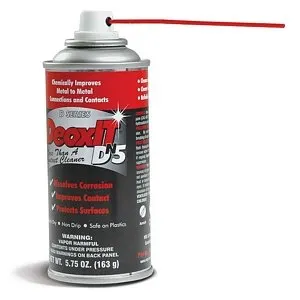
TOOLS Electronic contact cleaner (available at any electronics store), various screwdrivers, socket wrench or adjustable open-end wrench
HOW TO DO IT Simply remove the plastic cavity plate on the back of your axe, then plug in and listen for the source of the noise. (On some guitars, you might have to poke beneath the pick guard to get to the guts, but with a gentle touch you should be able to access the offending component.)
The can of contact cleaner should have a nozzle extension that allows you to spritz any point where dirt or oxidation is causing a noisy connection. Also, spray into the volume and tone pots at their openings, next to the solder lugs and directly onto all switches. Rapidly flick each switch—or twist each knob—back and forth, and then play for a while, listening for persistent noises. Repeat as needed. Nine-volt batteries can be tested with the old tongue test: if its terminals tingle on your tongue, the battery is fine.
D.I.Y. FACTOR★★★★ Just don’t spray the cleaner in your eyes.
5. Change the Strings
All of the adjustments discussed so far should be done prior to changing strings. The only time you would adjust the truss rod, bridge height and nut slots with new strings on your guitar would be when changing to a different gauge. Otherwise, use two sets—one for adjustments and one for playing.

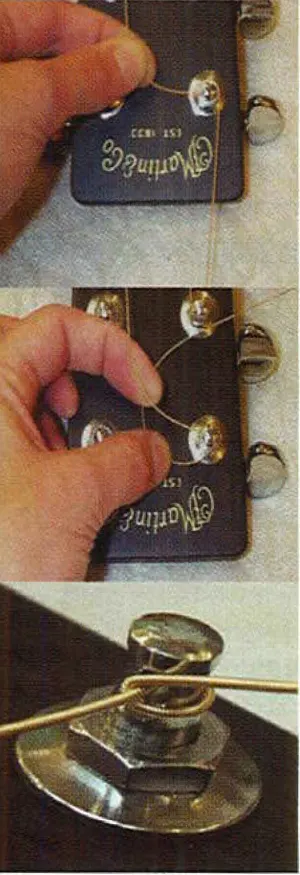
TOOLS Heavy-duty wire cutters to trim excess string length; otherwise, use your fingers to wind excessive string length into coils.
HOW TO DO IT On most electric guitars and some acoustics, the strings simply slip through the bridge or tailpiece and are held in place with string tension on the ball end of the string. Most steel-string acoustics use bridge pins to hold the strings in place, and it’s important to 1) align the slot in the bridge pin with the string, and 2) pull up on the string as you push down on the bridge pin. Nylon-string guitars require that the string be brought through the bridge, back around, and then woven in an under-and-over knot, as shown in PHOTO 8. To wrap the strings properly around the tuning posts, follow the step shown in PHOTO 9.
Pass the string through the tuning post, saving about an inch of slack, as in PHOTO 10A. Hold the “speaking length” of the string tightly and bring the loose end around the post in the direction opposite to the one in which it will wrap around the post when tightened (PHOTO 10B). Wrap it tightly around the tuning post, beneath the speaking length, then wrap the free end over and around the speaking length (PHOTO 10C) and give it a downward tug (PHOTO 10D). Now bring the string up to pitch. Finally, clip your strings with a wire cutter, or coil them neatly.
Once your guitar is tuned close to pitch, give each string a gentle tug along its entire length, including the section between the tuners and the nuts and between the bridge saddle and tailpiece. Give each string a series of whole- and half-step bends along its entire length as well. Steel-string acoustics and electrics will settle to within 20 cents of their correct pitch using this method, and nylon-string guitars will require only one or two more tunings over a two-hour period before settling into pitch.
D.I.Y. FACTOR★★★★ Easy to learn, easy to do.
6. Check the Tuning Machine Hardware
When tuners are under tension, they can feel firm. Remove the strings, though, and suddenly you’ll find more loose nuts and screws than a whorehouse on a funny farm.
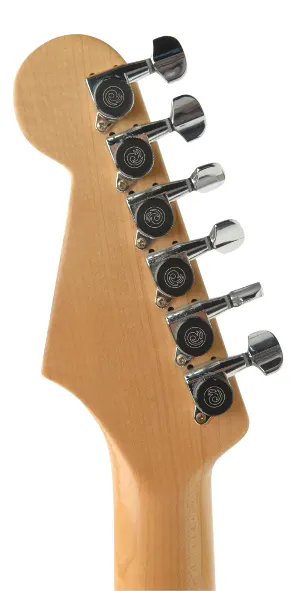
TOOLS A couple of small screwdrivers, an adjustable open-end wrench or a socket wrench, 3-in-1 oil
HOW TO DO IT Simply wiggle the parts around a bit. Most tuners have a nut on the face of the headstock and a small screw on the back. Gently tighten these screws with the appropriate size screwdriver.
Also, look for a small screw on the crown of the tuning button (not every tuner will have one). Tighten or loosen it to adjust the tension of the tuner.
If your guitar has open-gear turners—that is, if you can see the gears—add a drop of light oil to each mechanism. A drop down the shaft of a closed-gear tuner won’t hurt either.
D.I.Y. FACTOR★★★★ Just be gentle. These small, fine-threaded parts damage easily under excessive wrist or arm pressure torque.
7. Clean and Polish the Frets
This is basic housecleaning, not major fret surgery, like a “crown and polish.” Cleaning and polishing takes only five minutes, but afterward your guitar will look and play like new. If your fret wire exhibits major gunk, read ahead to step 8 for tips on removing it.
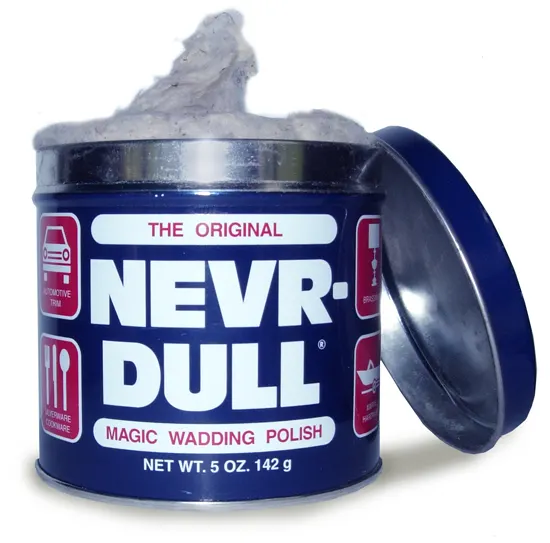
TOOLS A metal polish, such as Nevr-Dull, paper towels. Note: Do not use abrasive polishes like automotive buffing compounds or steel wool unless you really know what you’re doing.
HOW TO DO IT Open the can of metal polish and pull out a small wad of the chemically impregnated fibrous cloth. Rub across each fret and watch the dullness disappear. Wipe up any excess with a paper towel or rag.
D.I.Y. FACTOR★★★★ If you can wipe your nose, you can polish your frets.
8. Clean and Oil the Fretboard
Just like polishing the frets, this is easy-to-do housecleaning-level work.
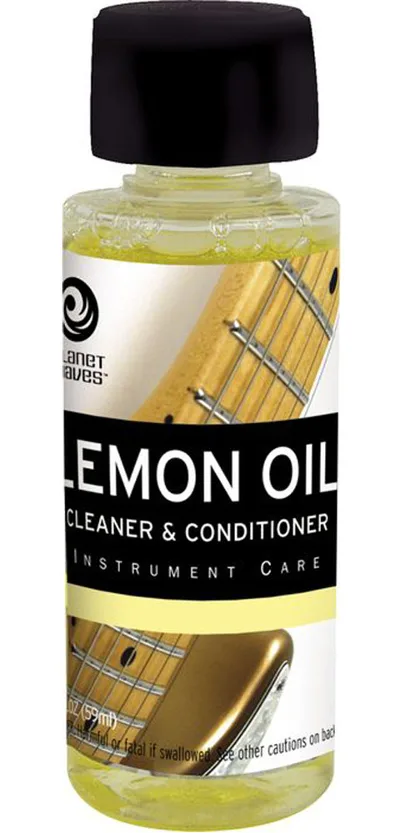
TOOLS Lemon oil or light wood oil, Windex, cotton rag, a guitar pick or a Popsicle stick
HOW TO DO IT If your frets and fretboard are severely filthy, begin with a little Windex to dissolve the worst dirt and grease. Use a guitar pick or a sharpened Popsicle stick to dislodge the grime that cakes against the frets and directly beneath each string. Then apply a light coat of lemon oil and wipe away any excess with a paper towel. If your acoustic guitar has an unfinished wood bridge, as most do, apply a little oil there from time to time too.
D.I.Y. FACTOR★★★★
9. Inspect for Structural Problems
Just as string tension can hide loose tuning gears, it can hide loose joints and cracks. Bolt-neck electrics occasionally suffer from lose neck-joint screws, and braces within an acoustic guitar sometimes break or come unglued.

TOOLS Medium Phillips-head screwdriver, inspection mirror, small flashlight
HOW TO DO IT If you’ve got a bolt-neck electric, give the neck a twist. If it wiggles, tighten the bolts at the neck-body joint. Set-neck electrics—both solid body and semi-hollowbody—rarely develop cracks, but now’s the time to go hunting. Check problem areas such as the neck joint and the section of the headstock behind the nut. Acoustic guitars are best inspected with an automotive or dental inspection mirror and a small flashlight. Don’t be shy about reaching into the sound hole and feeling around for loose or squeaky braces. If you find something suspicious, get thee to a luthier.
D.I.Y. FACTOR★★★★
10. Adjust the Pickup Height
Here’s a little-known modification that can really customize the response of your electric guitar. Bring the pickups closer to the strings if you have a very soft touch or if you want to compress your signal a bit with a slightly fuller, more midrangey tone.
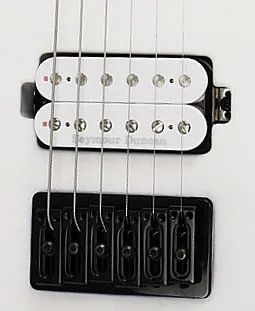
For players with a heavier pick attack or for those seeking wider dynamics and a more “airy” tone, lower the pickups slightly. Adjusting the height of each pickup also helps to balance the output between them. Angling the pickups—most often, sloping them down toward the low E string—may help to even out the response across the strings.
TOOLS Small screwdriver, amp (to monitor your sound)
HOW TO DO IT First, get one pickup to sound the way you want. Plug in, jam along with a favorite CD, and try adjusting that pickup’s height up or down, using the height adjustment screws on either side of the pickup—not the pole pieces on the pickup itself. Some pickups with strong magnetic fields can cause a fluttering out-of-tune-ness when they’re positioned too close to the strings, so listen carefully as you adjust, and be sure to play along the entire fretboard after every tweak.
Then, adjust for pickup-to-pickup balance by fretting the 1st and 6th strings, individually, at the highest fret. (There is about the same distance from the bridge to the bridge pickup as there is from the highest fret to the neck pickup.) Play each string as you switch between pickups. The sounds of the pickups should be nearly identical. Conversely, you can bring one pickup closer to the strings if you want that one to ”jump out.”
Finally, adjust for string-to-string balance by playing the 1st and 6th strings together at different points along the fretboard (FIGURE 4); the strings should have equal volumes at all points. Again, to achieve this balance, you’ll usually end up angling each pickup away from the thicker strings a bit.
FIGURE 4

D.I.Y. FACTOR★★★★ You’ve got the power to voice your guitar the way you want it to sound
11. Set the Intonation
Having correct intonation means that a string sounds at the correct pitch for each fret along its length. Intonation is adjusted at the bridge by increasing or decreasing the string’s length.
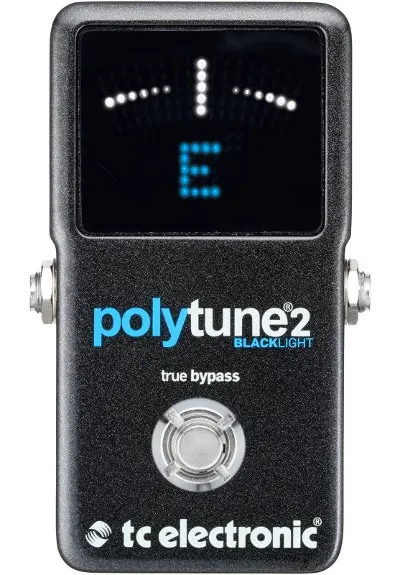
TOOLS Screwdriver (for electric guitar only), accurate chromatic electronic tuner
HOW TO DO IT With a fresh set of strings tuned to pitch, play each string at the 12th fret. Check its pitch with the electronic tuner. It should be the same as that of the corresponding open string.
If the fretted note is sharp, adjust the saddle so that the string’s speaking length is longer; if it’s flat, adjust the saddle to shorten the length.
An adjustment of about 1/16th of an inch will make a noticeable difference. Note: If you own a guitar with a floating tremolo system, such as a Floyd Rose, leave this job to a good repair tech. Of course, most acoustic guitars have nonadjustable saddles.
D.I.Y. FACTOR★★★★ It’s not too difficult on most electrics. But subtract all four stars if you’ve got a floating tremolo system or if you’re working on an acoustic guitar.
12. Clean and Polish
The finishing touch! A cleaned and polish guitar just begs to be picked up and played, and that’s what it’s all about

TOOLS Cotton or chamois cloth, guitar polish, Windex
HOW TO DO IT For major filth, a little Windex will work wonders. Then, simply grab your favorite guitar polish and get busy. A little goes a long way. One or two spritzes into a rag will handle each major surface. And keep the polish off the fretboard, unless it’s lacquered, and off any movable parts.
D.I.Y. FACTOR★★★★ Cleanliness is next to rock godliness.
